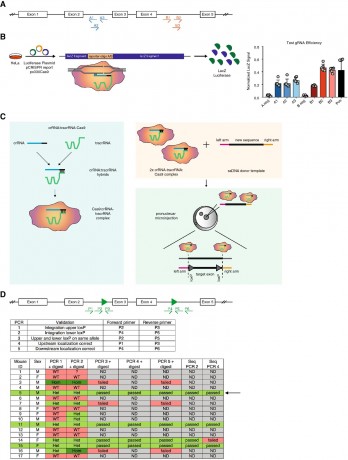
HI-STEM researchers developed an inducible Pabpn1 knockout mouse model, which can be used to study Alternative Polyadenylation. Poly(A) binding protein nuclear 1 (PABPN1) is known for its role in poly(A) tail addition and regulation of poly(A) tail length. In addition, it has been shown to be involved in alternative polyadenylation (APA). In this study, we generated an inducible Pabpn1flox/flox mouse model using crRNA-tracrRNA:Cas9 complexes targeting upstream and downstream genomic regions, respectively, in combination with a long single-stranded DNA (ssDNA) template. We performed extensive in vitro testing of various guide RNAs (gRNAs) to optimize recombination efficiency for in vivo application. Pabpn1flox/flox mice were generated and crossed to MxCre mice for validation experiments, allowing the induction of Cre expression in the bone marrow (BM) by poly(I:C) (pIC) injections. Functionally, knockout (KO) of Pabpn1 led to a rapid and robust depletion of hematopoietic stem and progenitor cells (HSPCs) as well as myeloid cells, suggesting an essential role of Pabpn1 in the hematopoietic lineage.
Further Reading:
Sommerkamp P, Sommerkamp AC, Zeisberger P, Eiben PL, Narr A, Korkmaz A, Przybylla A, Sohn M, van der Hoeven F, Schönig K, Trumpp A. CRISPR-Cas9 mediated generation of a conditional poly(A) binding protein nuclear 1 (Pabpn1) mouse model reveals an essential role for hematopoietic stem cells. Sci Rep. 2022 May 3;12(1):7181. doi:10.1038/s41598-022-11203-x PMID: 35504940; PMCID: PMC9065150.
